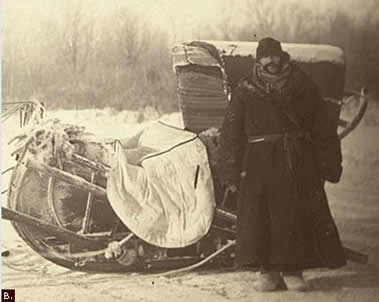"Tuesday Evening [March 13th] I made my way to the Embassy and the Ambassador sent me to the Duma. The Canadian railway expert, Bury, and his assistant, joined me and we started on our two miles' tramp through the snow. Half way, a country sledge passed us crowded with peasants in holiday dress. They waved their arms and cheered, and when we cheered in reply, they stopped the sledge and offered us a lift, an old soldier, who smelt of vodka, turning other passengers off the sledge to make room for us. As we drove along, holding on to one another to avoid falling, my soldier friend breathed into my ear that the Emperor [czar] was a good man, and fond of his people, but was surrounded by traitors. Now these traitors would be removed and all would be well." (560-1)

Russian sledge (Library of Congress).